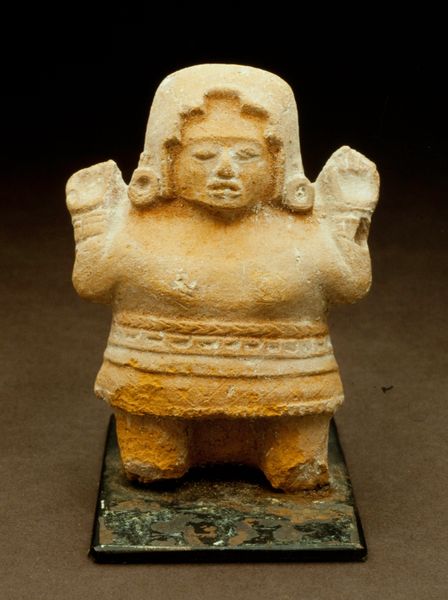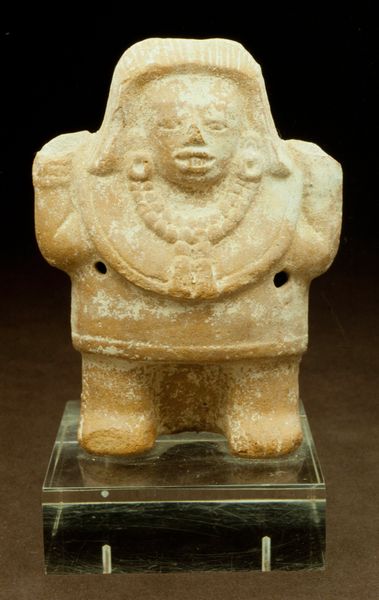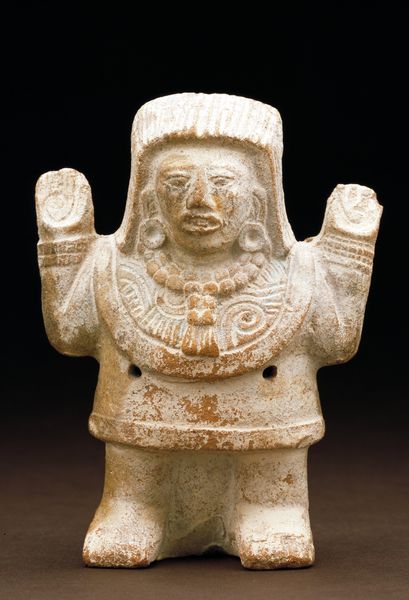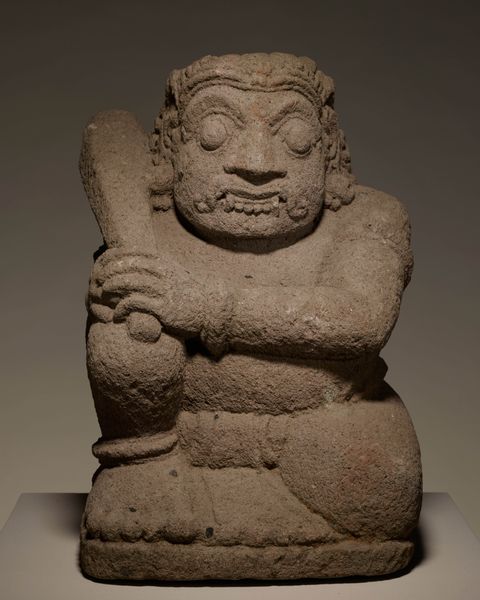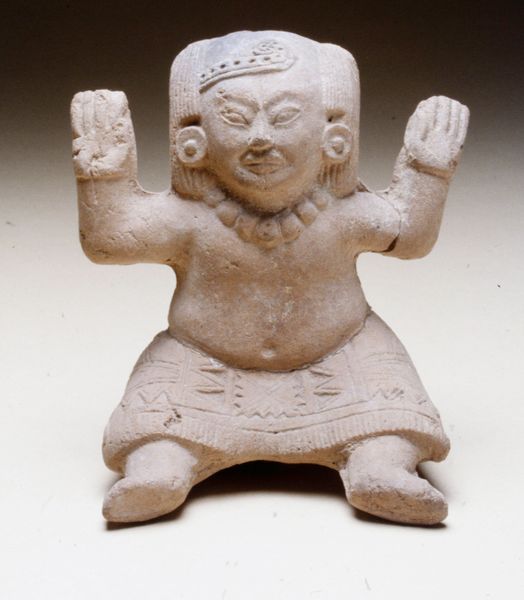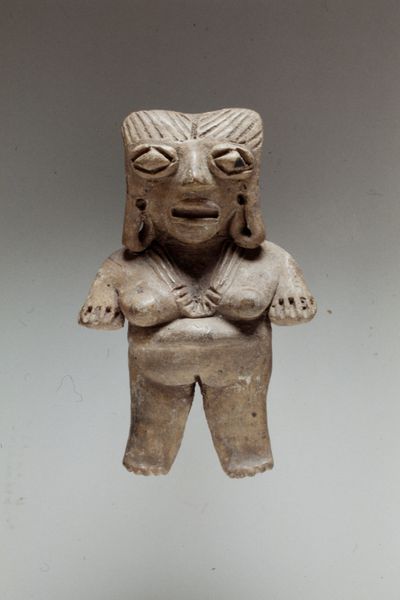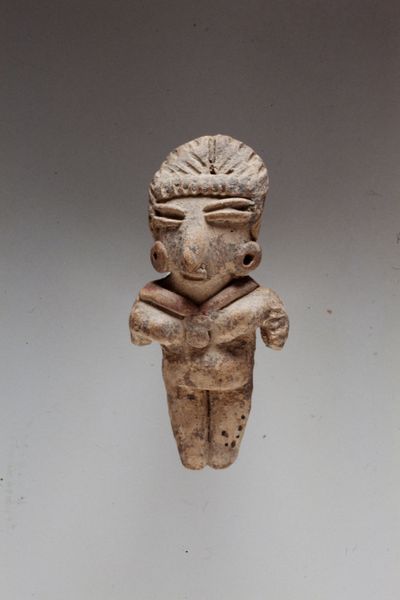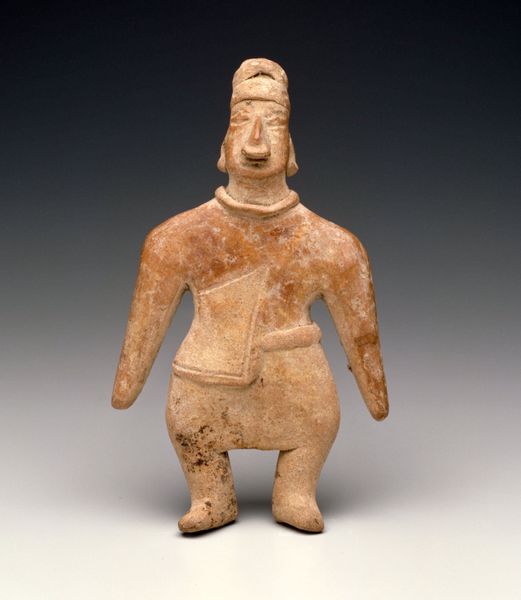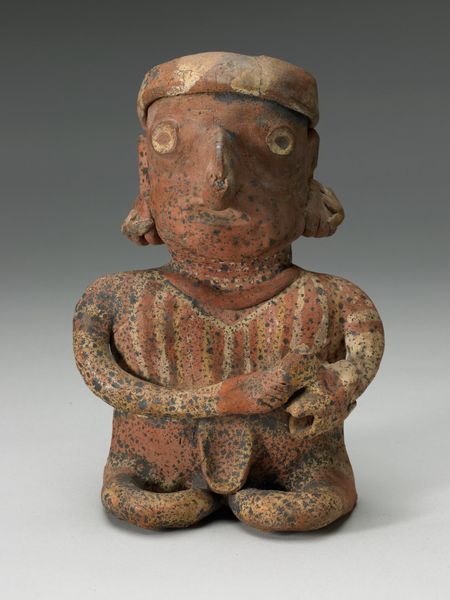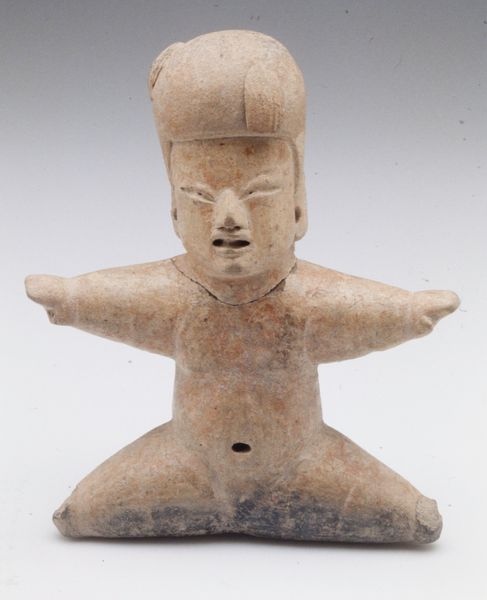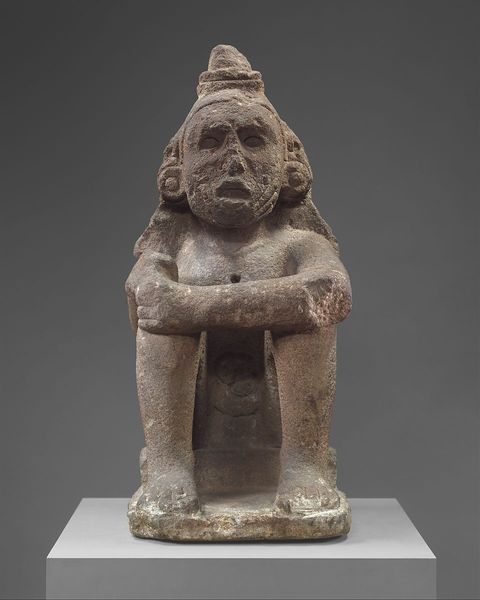
earthenware, sculpture
#
stone
#
sculpture
#
figuration
#
earthenware
#
sculpture
#
indigenous-americas
Copyright: Public Domain
Curator: Looking at this earthenware sculpture, dating from the 6th to 10th century, titled "Standing female figure," currently residing at the Minneapolis Institute of Art... Editor: ...I'm immediately struck by its solidity, its grounding presence. The texture also draws me in, almost begging to be touched, to understand how it was formed. Curator: It's a beautiful example of figuration in Indigenous American art. We can think about where the clay was sourced. How the artist's hands shaped this, layer upon layer, what tools they employed. Earthenware implies a local and very physical connection to the land. Editor: And consider its place in society at the time. It's clearly more than just an object; it’s a cultural artifact reflecting the ideals and beliefs of the community. Who was she? What role did women play in that society? Curator: The level of adornment is also relevant: notice the collar or yoke around her neck and wristbands. Were these simply decorative or indicative of her role or status? Such pieces reveal the production practices that enabled certain displays of class. Editor: Exactly. Its display within a museum space like Mia certainly changes its reception, framing it for a contemporary audience that might not have any ties to the statue's origins or ritual functions. Has it shifted from a sacred item to primarily an aesthetic one? Curator: I am particularly drawn to its enduring quality as a work crafted from humble resources. This shows the possibilities present in readily available, ordinary resources. Editor: It's this duality, this simultaneous connection to the everyday and the eternal that makes the artwork truly fascinating. Curator: Agreed; it serves as a testament to the deep roots connecting societies with land and skill. Editor: Absolutely. It also highlights the roles that collections, interpretation, and display play in assigning an object significance through social and cultural context.
Comments
No comments
Be the first to comment and join the conversation on the ultimate creative platform.
